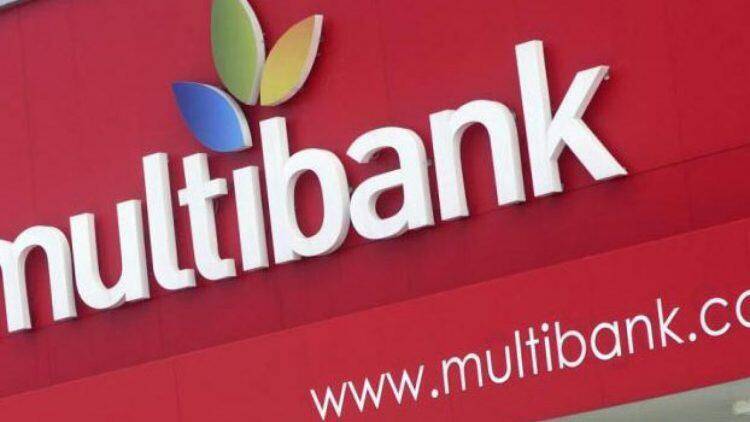10 Best Node js Image Manipulation Libraries in 2023
Contents:


Choosing the wrong tool can also greatly impact performance. This guide will introduce you to three NodeJS libraries you can use to create and edit images in your bot. In each section I’ll detail the advantages of each and give some code examples. This part was pretty simple, but the next step will become a bit more complicated. The newspaper editors would use their content management system to upload source images to an S3 bucket.
- By default, sharp makes the background of the rotated image black.
- You can include instructions in your dynamic URLs that tell Cloudinary to transform your assets using a set of transformation parameters.
- Fortunately, the Sharp library is logical and simple to use.
- This will create a directory called ‘icons’ with all of the icons required for your iOS/iPadOS and Android apps.
- Personally, I use Sharp in my image-sharing website Nekos.moe to handle uploaded images.
We chain the flop() method to the sharp instance to flop the image over the y-axis. We chain the flip() method to the sharp instance to flip the image over the x-axis. You have now used the composite() method to add text created with SVG on another image.
Rotate Image via JavaScript API
The rotateImage() function is an asynchronous function that reads an image and will return the image rotated to an angle of 33 degrees. Within the function, the rotate() method of the sharp module takes two arguments. By default, sharp makes the background of the rotated image black. To remove the black background, you pass an object as a second argument to make the background transparent. To compress the image, you pass it a mozjpeg property that holds a boolean value.
Image resizing in Node.js is somewhat straightforward with helpful libraries. Pass the file name with the path in the sharp method; you can now pass various image processing methods. This function will first create an svg image and use sharp composite method to create the polygon mask on the front image. And then composite this masked front image to the background image. The size passed in in config specify the size of the svg image. If you haven’t already been writing unit tests, now would be the time to start.
Unfortunately, I can’t provide any examples of this myself, since I don’t use it and CodeSandbox doesn’t allow installing GraphicsMagick. Luckily the GitHub has a very detailed README and many examples, so check it out if you’re interested. I will go through these steps in a bit more detail and explain the level of detail we went into to make this application quite special.
- Call the rotate function with how many degrees you want to rotate the image.
- Personally, I use node-canvas in my Discord bot, Mirai, to generate responses for the weather command.
- However, if the program throws an error during execution, it will crash.
- Flatlogic is the easiest way to generate React, Angular, Vue boilerplates for full-stack web apps in just 3 steps.
- (./packages/plugin-contain) – Contain an image within a height and width.
- Create a separate module for your processing functionality and import it into your route.
Add caching to your application so that repeated requests to your endpoint use pre-stored images rather than regenerating a new image each time. Even though this application is fairly straightforward, you still want to set it up in a scalable way. How can you set up your server and route so that your project remains scalable? It’s best to create this and test that it is working before you move on. You have quite a few dependencies that all need to work together. Sometimes it’s easiest to write some simple js functions to test that all of your dependencies work together before you begin adding any functionality.
Chaining transformations
Setting x to 50% draws the text in the middle of the container on the x-axis, and setting y to 50% positions the text in the middle on y-axis of the SVG image. The object has a background property which holds an object defining the RGBA color model. The top and left properties control the position of the box. When you set left to 120, the box is positioned 120px from the left edge of the image, and setting top to 70 positions the box 70px from the top edge of the image. The output shows that the original image is 120 kilobytes.
How to do image processing in node js?
- Setting up a sharp image project.
- Converting an image to grayscale.
- Tinting an image.
- Extracting image metadata.
- Rotating an image.
- Resizing an image.
- Formatting an image.
- Cropping an image.
You can perform image operations such as image resizing, rotating, extracting, corrections and compositing. Sharp is compatible with MacOS, Windows, and Linux systems and doesn’t require any additional installations when using the Node.js Version 10 and above. Create a folder called node-image-magick following the steps in the previous section, install the ImageMagick module via npm and create an index.js file. ImageMagick is an open-source image processing software for creating, modifying, and conversion of images.
Jimp
If you’re short on time, just pick one of the ready schemas. Basically divide straight in the middle as most of these large images are just double the size of single image. Alternatively, view jimp alternatives based on common mentions on social networks and blogs.
10 Best Node.js Frameworks For Web Apps in 2023 – Techgenyz
10 Best Node.js Frameworks For Web Apps in 2023.
Posted: Tue, 28 Feb 2023 08:00:00 GMT [source]
For optimal performance make sure you are using Node.js version 10 and above. When the request and response sizes for your server application are relatively small, a middleware-based pipeline like that of the Express framework is a good solution. But a middleware-based system might become problematic when the application has to deal with images that might be 14MB big. For a 200 status code result we also want to push data to the client as soon as possible, instead of writing the whole result in one go.
Image Processing in Node.js With ImageMagick
You can also easily access pixel-derived image statistics for every channel in the image such as min, max, sum, mean, sharpness, entropy, and many more. At the time of writing, sharp doesn’t have a native way of adding text to an image. To add text, first, you’ll write code to draw text using Scalable Vector Graphics. Once you’ve created the SVG image, you’ll write code to composite the image with the sammy.png image using the composite method. Jimp stands for JavaScript image manipulation program and it does what it says on the tin a flawless fashion.
In this section, image processing in node js resize an image, change its image type, and compress the image. Image compression is the process of reducing an image file size without losing quality. Now that you’ve read an image and extracted its metadata, you’ll now resize an image, change its format, and compress it. In this section, you’ll write code to read an image and extract its metadata. Image metadata is text embedded into an image, which includes information about the image such as its type, width, and height. We duly hope that you are not tired of the “simple-complex” swings of our list, as here comes another simpler JavaScript image manipulation library.

A buffer is a temporary space in memory that stores binary data. Create and open the addTextOnImage.js file in your text editor. The top and left values positions the sammy-transparent.png image relative to the underwater.png image. Flatlogic is the easiest way to generate React, Angular, Vue boilerplates for full-stack web apps in just 3 steps. We offer a platform with starters/templates, CRUD app generator and hosting, all combined making a perfect solution for web development. It lets you define fields, columns, and data types for the database.
Cropper.js
At a minimum, you should have at least one test for your endpoint and at least one test for your https://traderoom.info/ processing, but there are many different tests you could create. After you or your users have uploaded image assets to Cloudinary, you can deliver them via dynamic URLs. You can include instructions in your dynamic URLs that tell Cloudinary to transform your assets using a set of transformation parameters.
You’ll use the extend() method to crop the sammy.png image. After that, you’ll chain the grayscale() method to the cropped image instance and convert it to grayscale. You will receive no output, but an image file sammy-resized-compressed.jpeg is saved in your project directory. To extract the metadata, you’ll first import the sharp module, create an instance of sharp, and pass the image path as an argument.
How to upload image using node js?
- Step 1: Setting Up Development Environment. The code used in this project is available in a GitHub repository and is free for you to use under the MIT license.
- Step 2: Configuring Multer.
- Step 3: Adding Image Validation Rules.
- Step 4: Using Multer as an Express Middleware.
Add the following highlighted code to composite the SVG text graphics image onto the sammy.png image. You’ve now composited images using the composite() method. In the next step, you’ll use the composite() method to add text to an image. The composite() method requires an image of similar size or smaller to the processed image. Check for the existence of sammy-rotated.png in your project directory. Now that you’ve cropped and extracted the image, you’ll work with rotating and blurring it.
Now, when you use sharp() to read the image, it creates a sharp instance. You then chain the metadata() method of the sharp module to the instance. The method returns an object containing the image metadata, which you store in the metadata variable and log its contents using console.log(). You can resolve the promise using the then method or use async/await, which has a cleaner syntax.
Get the Medium app
In this code, fill changes the text color to black, font-size changes the font size, and font-weight changes the font weight. Image Composition is a process of combining two or more separate pictures to create a single image. This is done to create effects that borrow the best elements from the different photos. Another common use case is to watermark an image with a logo. For the alpha property to work, you must make sure you define and set the values for r, g, and b.
AWS Lambda Now Has Support for Node.js 18 Runtime – InfoQ.com
AWS Lambda Now Has Support for Node.js 18 Runtime.
Posted: Mon, 28 Nov 2022 08:00:00 GMT [source]
Enter y to save the changes you made in the file, and confirm the file name by pressing ENTER or RETURN key. Basic knowledge of how to write, and run a Node.js program. You can follow How To Write and Run Your First Program in Node.js to learn the basics.

(./packages/plugin-contain) – Contain an image within a height and width. You can also use other features like image optimization or blurring an image. You have to create now the ‘assets’ folder and ‘img’ folder in your node project. Sharp is a top-notch third-party dependency that makes the image processing task exorbitantly facile.

Contribute to aheckmann/gm development by creating an account on GitHub. It implements the Web Canvas API, so anything you can do inside a can be done with Node Canvas. This makes finding support much easier, since it’s widely used. It isn’t as fast as something like Sharp, so if you’re going for efficiency it might not be the best choice. Here’s a guide for contributors that covers reporting bugs, requesting features, and submitting code changes. Some of these options require the use of a globally-installed libvips compiled with support for libimagequant .
This module can produce images in JPEG, PNG, WebP, AVIF, and TIFF formats as well as uncompressed raw pixel data. Images are an important component of most applications that handle user-generated content. However, excessively large or unoptimized image files can negatively impact performance and user experience. A robust image processing solution can be invaluable for UGC management. Resizing is the process of altering an image dimension without cutting anything from it, which affects the image file size.
Is NodeJS suitable for image processing?
Node. js has an ecosystem of libraries you can use to process images, such as sharp, jimp, and gm module.
When you ask yourself should I use Node.js to process images, this is a question that definitely qualifies for Atwood’s Law. On the right, we have the resized image, and on the left, we have the original large image. Official Node integration for Optidash – AI-powered image optimization and processing API. We will drastically speed-up your websites and save you money on bandwidth and storage.
In this example, we generate a cropping box 500px wide by 300px high and positioned 740px from the image’s left border and 340px from the image’s top border. With the extract method, any part of the image that fits inside the box will be retained. Now that you’ve rotated and blurred an image, you’ll composite an image over another.
GraphicsMagick describes itself as “the swiss army knife of image processing”. If you look through the docs you should be able to find a way to do anything needed. Unfortunately, it benches at around 15% the speed of Sharp, so Sharp may still be a better option if possible. Personally, I use node-canvas in my Discord bot, Mirai, to generate responses for the weather command. This requires a lot of pixel-precise positioning and alignment, image placement, text rendering with custom fonts, coloring, and rotation of icons.
How to read image files in NodeJS?
- fs. readFile(): This method is used to read the data of a file asynchronously.
- fs. readFileSync(): This method is used to read the data of a file synchronously.







